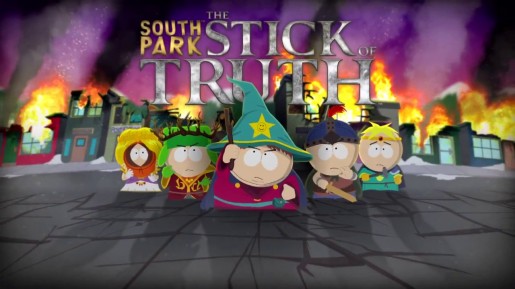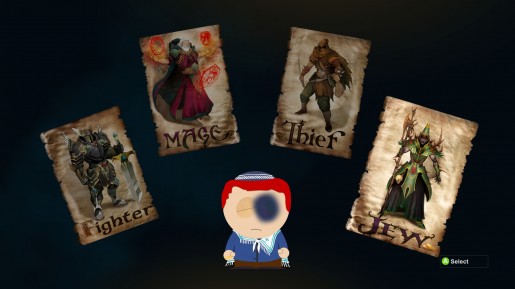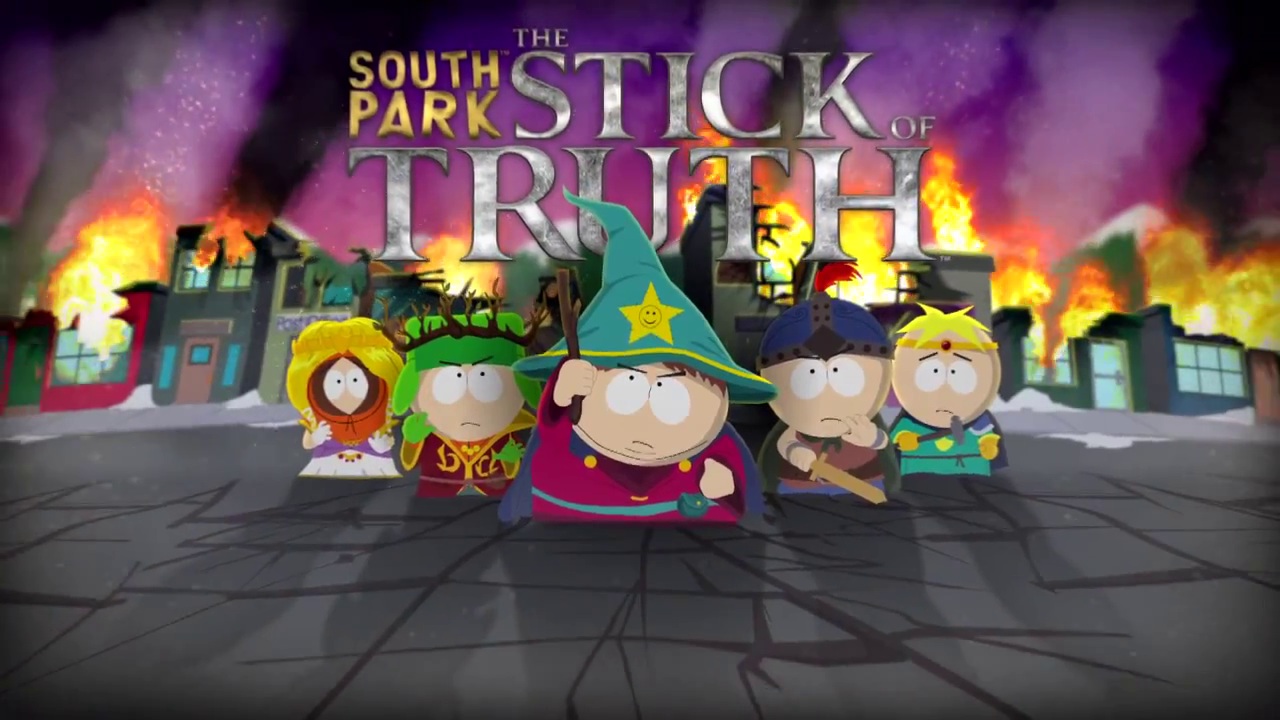
Come on down to South Park and leave your woes behind, The Stick of Truth is finally here! Following several delays, Obsidian Entertainment has brought series creators Trey Parker and Matt Stone’s vision to gaming platforms everywhere. South Park: The Stick of Truth isn’t the first video game adaptation of the animated series, with Chef’s Luv Shack and South Park Rally ranking among the least memorable. Needless to say, South Park doesn’t have a history of well-received installments in this interactive media, but The Stick of Truth is looking to change that. In fact, it is easily the best use of the license, or arguably any license for that matter.
Note: For those of you who have not done so, I highly recommend watching South Park’s Black Friday trilogy found in Season 17, which contains the following episodes: “Black Friday”, “A Song of Ass and Fire”, and “Titties and Dragons”. These three episodes basically serve as the prequel to The Stick of Truth.
South Park: The Stick of Truth sees players take on the role of a mysterious “new kid” with unknown powers who has just moved into town. You are given a sizable assortment of options to create your male lead (sorry, no female option) and every combination results in an extremely authentic addition to the already established cast of characters. As the soon-to-be-hero, you head off into the open world of South Park with the ability to explore a fully mapped out town for the first time ever. You can see it all, from Eric Cartman’s House to City Wok to South Park Elementary. Of course, the game nudges you in the right direction at first with the appearance of Butters, your first friend, and his guidance toward the Cartman-ruled Kingdom of Kupa Keep (aka KKK). From here, the real journey into this town-wide role-playing adventure begins with all of the politically incorrect satire and unapologetic raunchy humor you have come to expect from the kids of South Park.

The Kingdom of Kupa Keep holds and protects the Stick of Truth, a tool of unimaginable power that gives its wielder ultimate control over everything. Actually, it’s just a stick. But, hey, these are kids’ imaginations at work here. The opposing force, the Elven Kingdom, wants the stick for themselves and is relentless in their efforts to obtain it. As the new kid, officially given the name “Douchebag” by Cartman, you join up with the KKK to bolster their forces. As with all South Park episodes, things quickly spiral out of control, turning the children’s innocent role-playing game into a government cover-up containing Nazi Zombie fetuses, the ever-flatulent Canadians and mooing Visitors. You’ll find yourself, the prophesized Dragonborn, at the center of these escalating disasters as the final hope.
At the game’s core are classic RPG elements. The player is given a choice between four classes: Warrior, Mage, Thief and Jew. It comes as no surprise that Cartman isn’t a fan of the final class option. Each class has its own special abilities, but sadly that’s where the differences end. For example, the Warrior can leap into the air and slam down into enemies using Ground Stomp whereas the Jew can load up a sock and rocket it into an enemy with Sling of David. Super-powered moves like these don’t come free and require PP to use. In addition to these special abilities, all classes have access to ranged attacks — these can come in the form of sawblades, throwing darts, bows and arrows, and much more — and magic in the form of farts. Having kids wield and wear household objects repurposed for battle is a nice touch and fits perfectly with the characters’ 4th-grade shenanigans. Early options are crude wooden swords, but later on you may come across the hockey stick called the “Canadian Halbred”. The best part? These everyday “weapons” come with augment slots, allowing the player to turn that pink dildo they just found into a flaming blunt weapon to be feared.

These all come together in a turn-based combat system akin to Paper Mario, where timed button presses maximize effectiveness. The system is welcoming and easy to grasp, but over time it reveals its true depth and allows serious players to dive into the various combat options without alienating newcomers. There are several enemy types with different tactics which will require that the player plan out their attack or risk wasting their turn. In one combat scenario, you may find yourself up against an armored melee warrior, a bow-wielding ranger and a stat-boosting cleric. Choosing who to prioritize and how to attack them become engrossing endeavors of strategy. Given that enemies can take different stances — reflect blocks ranged attacks and riposting cancels out melee attacks — and numerous status effects can be placed on a character (ex: Grossed Out and Bleeding), tactics need to be altered on the fly for these ever-changing encounters.

